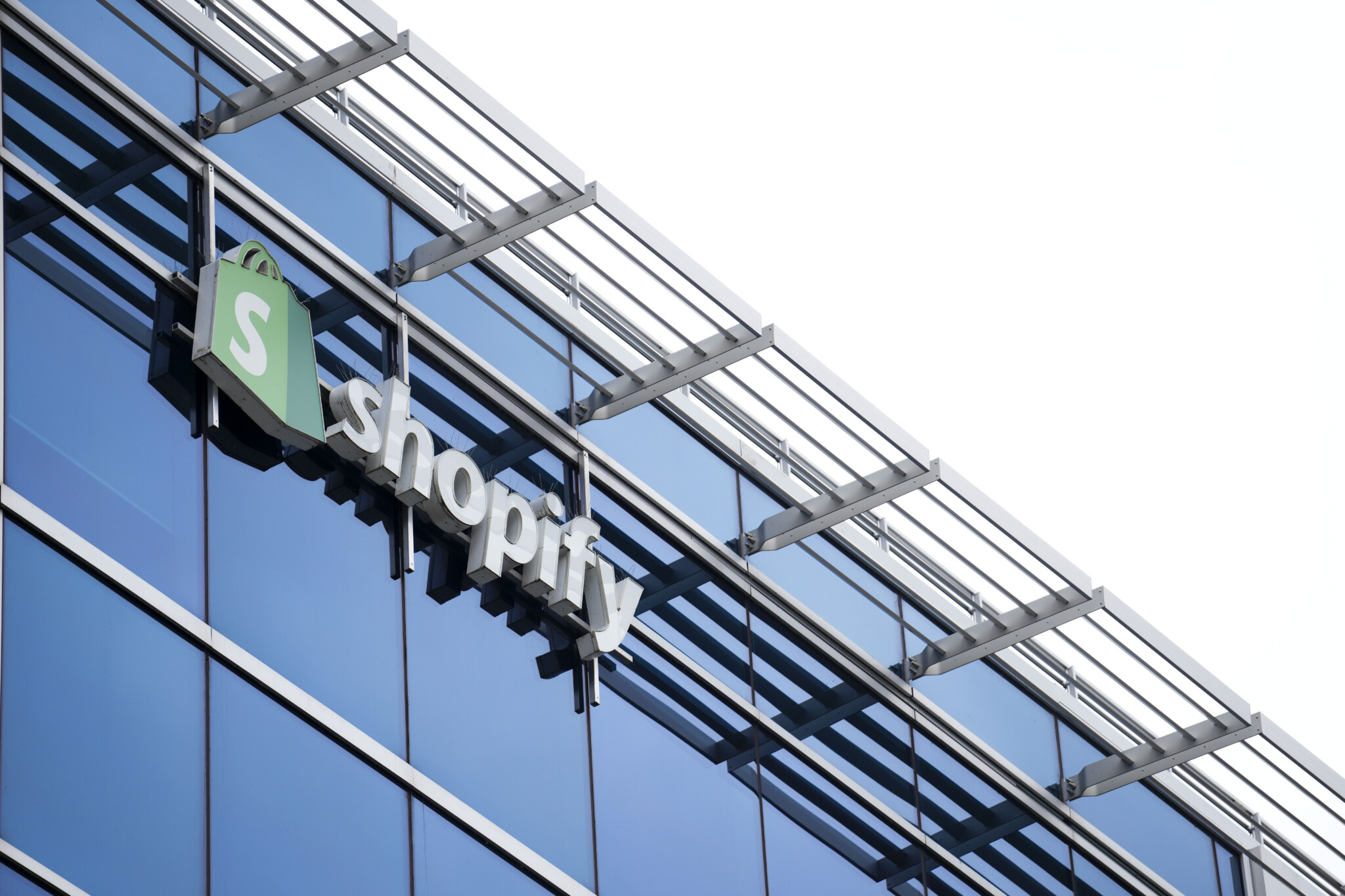Nearly a decade after the Paris Agreement was signed, its self-imposed climate deadlines are now looming ever larger. In response, two years ago, Canadian e-commerce giant Shopify joined Stripe, McKinsey, Meta, and Alphabet in announcing Frontier, a $925 million commitment to purchase carbon removal credits. So far, $91 million has gone to 13 direct air capture companies, the largest chunk of Frontier’s portfolio.
Direct air capture (DAC), which removes carbon dioxide from the atmosphere rather than capturing it at industrial emission sources, is a relatively new and untested technology that’s become a corporate cause célèbre. While DAC currently accounts for a very small amount of worldwide carbon removal, companies ranging from Microsoft to the Lego Group have invested millions in it.
While critics allege DAC may not live up to its potential given its sizable cost, those holding the purse strings see it growing into a potent tool in the intensifying fight against climate change. Massive sums are flowing into DAC as the industry approaches a point where it will need to show what it is made of.
The hot new trend
Gregory Nemet, a professor at the University of Wisconsin–Madison who specialises in energy policy, explains that the fervour for direct air capture dates back to the 2016 Paris Agreement. With 195 signatories attempting to limit a rise in global temperature to 1.5 degrees, countries agreed to aim for net-zero emissions by 2050.
This, Nemet says, is an “ambitious” goal that requires us to “really use the ‘net’ part.” While the bulk of the work must be done by adapting electric vehicles and renewable energy sources, carbon removal technologies will comprise, in Nemet’s estimation, up to 20 percent of the effort.
“Companies who adopted net-zero targets realized they needed to do CO2 removals for some portion of their emissions reductions,” Nemet says. “Microsoft has been by far the most aggressive in trying to catalyse the industry to become something mature.”
Because DAC is still a small industry, its carbon credits are expensive. For example, Heirloom Carbon, which Frontier signed a $26.6 million contract with, charges up to $1,000 dollars to remove one tonne of carbon.
The faster DAC is scaled up, the cheaper removals will become. This would create a more robust voluntary carbon credit market, or ease the pain of any mandates introduced by governments.
“The only way the world can remove billions of tons of CO2 to achieve climate goals is if it can be done profitably,” says Scott Coriell, Heirloom’s public affairs representative.
“Longer-term, we’re aiming for less than $100 [per tonne], a price point widely understood by economists, policymakers, and investors to ensure a thriving, healthy industry.”
This, according to Shopify, is why the company joined Frontier, whose member companies hope to collectively accelerate demand and affordability with coordinated purchases. “If we want to reach our climate goals, we need a gigatonne-scale carbon removal market, and we cannot do that alone,” a spokesperson tells The Hub.
To build that thriving industry, however, will require DAC to grow in a hurry.
“We’re about one one-thousandth of the way to where we need to be by 2050,” Nemet explains. “If we haven’t built substantial amounts of DAC in 10 years, then we’re probably not going to be able to scale it up. Costs have to come down, it has to be proven as reliable, we have to grow supply chains. Tech companies investing is a good start, but soon we’re going to be leaning more on policymakers to fund these plants and create markets or obligations for removed CO2.”
To Nemet, it makes sense that Silicon Valley firms are particularly enthusiastic about DAC—investing in a very expensive technology in the hope it becomes accessible is “a very Silicon Valley way of looking at things.”
“There’s this idea of wanting to have an impact on the whole world, and looking for solutions that are really big is appealing to that community,” Nemet says. “But the magic of Silicon Valley is fueled by miniaturisation—packing more and more transistors into the same space. That’s not a possibility with DAC. It operates on a gigantic scale. Oil companies and construction firms and large equipment manufacturers will have to be involved.”.

A man walks to work wearing a mask near Parliament Hill, Wednesday, June 7, 2023 in Ottawa. Adrian Wyld/The Canadian Press
Reduction and emission
Given their deep pockets, there are advantages to letting corporations lead the charge on carbon removal. However, any company large enough to make massive expenditures is also large enough for its sustainability department to possibly be at odds with the departments attempting to turn a profit.
Headlines like “Microsoft’s AI obsession is jeopardizing its climate ambitions” therefore raise concerns, as the energy demands of AI tech are causing corporate carbon emissions to spike.
But Nemet isn’t too concerned. He notes that 20 years ago there were fears a rapidly growing demand for consumer electronics would cause consumption by “energy vampires” to skyrocket before more efficient designs ultimately emerged.
“How much does AI, and the energy used for it, keep growing? It could be that kind of outcome, or it could be something much bigger. We’ll see.”
When asked about its use of AI, Shopify commented that it is “integrating sustainability across all our operations” and noted that it aims for transparency with detailed annual climate reports.
Nemet adds that while AI is currently using a lot of fossil fuels, that’s primarily because we as a society are still using a lot of fossil fuels. Hopefully, that reality will soon change as we attempt to pivot to solar, wind, and other renewables.
“I think AI becomes less of an issue as we clean up our power grid,” Nemet says. “We need to be building even more clean energy anyway, so I’m not sure AI is completely transformative. The tech companies who are the most aggressive on developing AI have been the biggest corporate purchasers of renewable energy and carbon removal.”
There is also, however, the question of how legitimate carbon removal credits prove to be, as some companies have faced questions, scandals, and accusations of fraud. Last year, The Guardian alleged that over 90 percent of the anti-deforestation credits issued by Verra, a major credit certifier, were actually “worthless.”
This, Nemet says, is where DAC could prove advantageous.
“In a way, DAC is the easiest carbon removal method to verify. It does take some trusted systems, but other methods, like storing carbon in soil and the ocean, are way harder to track. DAC carbon, if you put it into concrete or secure it underground, is mostly durable, as opposed to non-durable carbon stored in trees and dirt.”
Heirloom Carbon, Coriell says, “[C]alculates any emissions generated by our process, and subtracts those from the amount of CO2 we remove. This net amount of CO2 removed is then sold to customers. Our technology adheres to extremely rigid standards of monitoring, reporting, and verification. We are working with a third-party to independently measure and verify every tonne we remove, including embodied carbon in the materials used to build our facility.”
Third-party verification is an important step, but Nemet notes there’s currently a glut of verification protocols suggested by companies, governments, and industry organisations. Refining these methods, and the technologies that enable them, will “need to be figured out.” And some of these methods may fade into irrelevance as a crowded industry begins to consolidate.
Surviving the boom
The next 10 years will truly tell us whether DAC scales up to be a significant part of the climate change solution. Regardless, it seems unlikely that all 13 DAC firms that Frontier is buying credits from will survive.
“Similar to other tech evolutions, you have this explosion of variety, lots of firms trying different things,” Nemet says. “At some point, probably in the next five or 10 years, you have a convergence on a dominant design, and the number of companies shrinks.”
DAC companies are spending today to achieve profit tomorrow, and there is no shortage of parties contributing to that spending. Coriell says Heirloom has raised $53 million in Series A venture capital funding and is eligible for up to $600 million in American federal funding. Amid this deluge of attention and money, the path to actual results is challenging but visible.
“Heirloom has sold hundreds of millions of dollars worth of carbon removal credits to some of the world’s largest buyers,” Coriell says. “One of our largest contracts is with Microsoft for over 300,000 tonnes of carbon. Current market trends suggest buyers will be willing to pay around $300 per tonne of CO2 removal by 2030. At that price, we feel confident in the profitability of our business.”
Heirloom’s analysis may be optimistic. Estimates vary, but MIT, for example, believes that a typical DAC credit may go no lower than $600 by 2030.
Regardless of where the price lands, Heirloom—along with other DAC companies—will need to become profitable soon. To hit Paris Agreement goals, we’ll need to be removing an estimated seven to nine billion tonnes of CO2 per year. Currently, an estimated two billion are being removed, primarily through reforestation and other conventional methods. Novel methods, which include DAC, currently account for less than 0.1 percent.
Shopify accurately notes that it is “one of the largest corporate [CO2 removal] purchasers in the world,” but so far, the spokesperson says, it has committed $70 million on 119,000 tonnes of durable carbon removal. This will need to get more cost-efficient.
Despite these stark numbers, Coriell says Heirloom “has a real path towards removing one billion tonnes of CO2 by 2035,” which certainly speaks to the titanic scale DAC boosters hope to operate on. Nemet adds that while that scale looks intimidating, it is one we’ve previously managed to achieve.
“They’re big numbers, but we…[move] around really big numbers of oil and gas [at that scale today]. To do the same with carbon removal, we need something on the same order of magnitude. It’s been done before. We’re doing two trillion dollars a year in clean energy now. Ten years ago, I don’t think anyone would have been very confident we’d be doing that. That’s private sector investment.”
Today, large companies like Shopify are essentially betting on every horse in the stable, from firms attempting to mineralise carbon, to those working on converting organic waste into energy. Only some of these bets will pan out, but we’re at the point where the money needs to be spent now in the hope results will come later.
“We support more than 40 different carbon removal companies across a range of emerging technologies,” the spokesperson said. “We don’t yet know exactly which technologies will succeed, but that’s an exciting challenge and not one we want to shy away from.”
Nemet emphasises that while DAC may be a smaller piece of the puzzle, the puzzle—that is confronting climate change—may not be complete without it.
“We really do need to get to net zero. There aren’t many companies doing carbon removal. What Microsoft has done has impacted the whole world of carbon removal. Priority number one is emissions reductions, that’s 80 or 90 percent of the solution. Carbon removal fills in the rest.”
This article was made possible by Deep Sky and the generosity of readers like you. Donate today
Editor’s Note: A previous version of this story stated that Shopify has “spent” $70 million on 119,000 tonnes of durable carbon removal. In fact, they have “committed” these funds. The Hub apologizes for the error.










